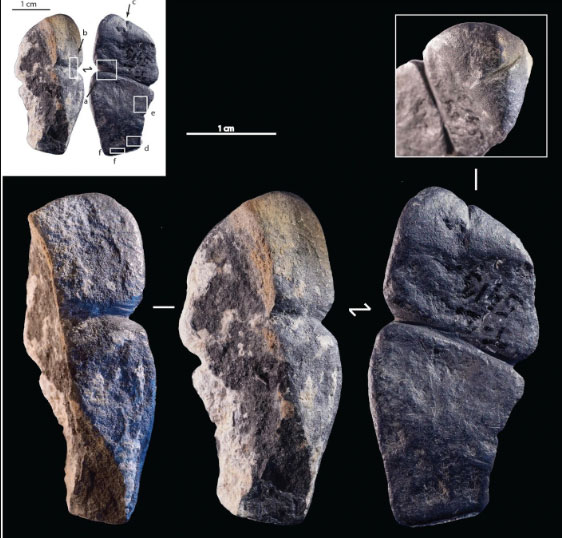 PESSAC, FRANCE—According to a Phys.org report, a piece of carved stone unearthed at a site in northern Mongolia’s Khangai Mountains in 2016 may be an early depiction of a phallus. The object, dated to between 42,400 and 41,900 years ago, had been modified with two grooves. Solange Rigaud of the French National Center of Scientific Research and the University of Bordeaux and her colleagues observed that one of the grooves wraps around the midsection of the stone, while the other runs its length from top to bottom. These grooves may have been intended to enhance the stone’s resemblance to a phallus, the researchers explained. One side of the stone is also shiny, suggesting that it had been rubbed against a soft surface, such as human skin, perhaps while worn as a pendant. Critics of this idea note that the stone could have been used as a tool, with the midsection groove simply serving as a way to attach it to a string for use as a pendant. Read the original scholarly article about this research in Scientific Reports. To read about phallus-shaped obsidian tools uncovered on New Britain Island, go to "World Roundup: Papua New Guinea."
PESSAC, FRANCE—According to a Phys.org report, a piece of carved stone unearthed at a site in northern Mongolia’s Khangai Mountains in 2016 may be an early depiction of a phallus. The object, dated to between 42,400 and 41,900 years ago, had been modified with two grooves. Solange Rigaud of the French National Center of Scientific Research and the University of Bordeaux and her colleagues observed that one of the grooves wraps around the midsection of the stone, while the other runs its length from top to bottom. These grooves may have been intended to enhance the stone’s resemblance to a phallus, the researchers explained. One side of the stone is also shiny, suggesting that it had been rubbed against a soft surface, such as human skin, perhaps while worn as a pendant. Critics of this idea note that the stone could have been used as a tool, with the midsection groove simply serving as a way to attach it to a string for use as a pendant. Read the original scholarly article about this research in Scientific Reports. To read about phallus-shaped obsidian tools uncovered on New Britain Island, go to "World Roundup: Papua New Guinea."
What Does This Upper Paleolithic Carving Represent?
